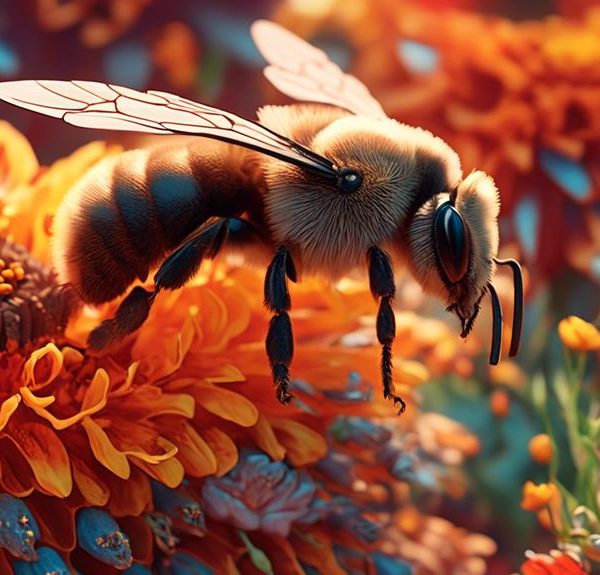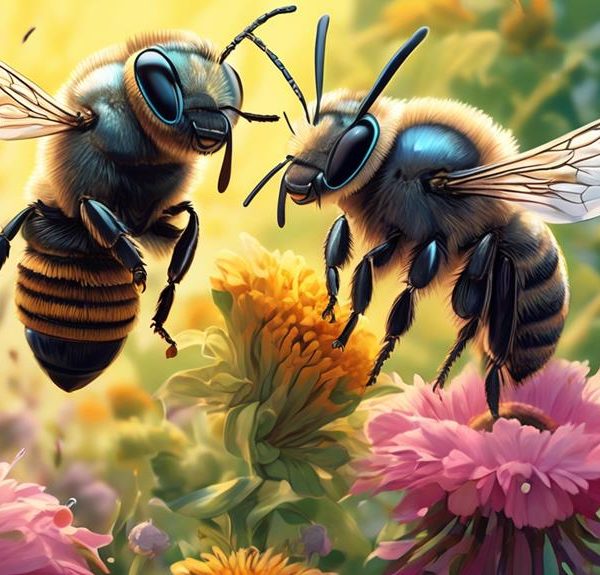Baffling bee enthusiasts, the mystery of whether Mason bees are native to Texas promises to transform your understanding of your backyard.
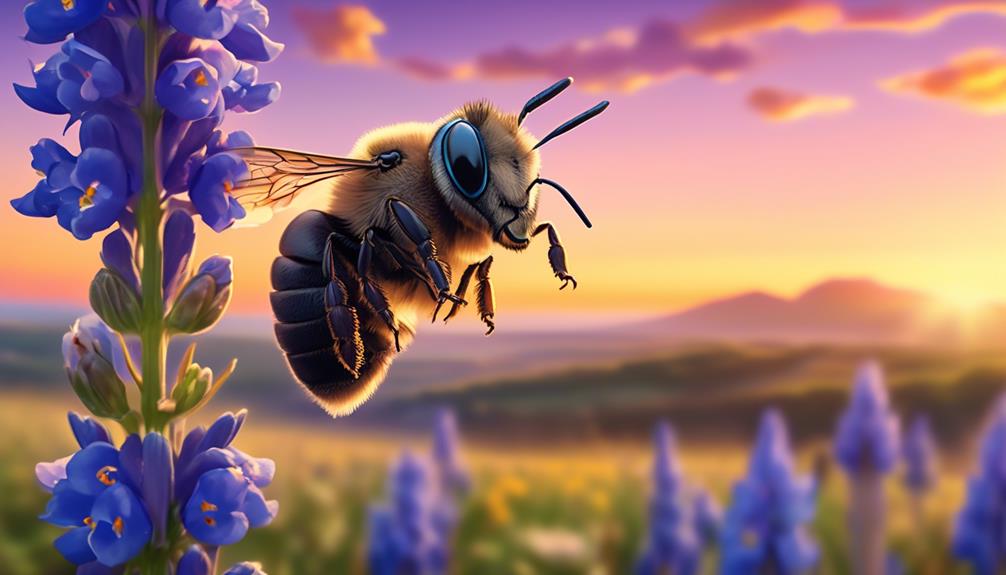
Are Mason Bees in Texas?
You'd need a million eyes to spot every single mason bee in Texas! These industrious creatures, famous for their masonry skills, have sparked a lively debate among local naturalists and bee enthusiasts alike.
Are they truly native to the Lone Star State, or have they migrated from elsewhere? While the evidence points in various directions, the answer isn't quite as simple as you might think.
The intriguing complexities of these bees' presence in Texas could forever change the way you view your own backyard.
Key Takeaways
- Mason bees are not originally from Texas and migrate through various states before establishing in Texas.
- Mason bees are prolific pollinators in Texas, enhancing biodiversity and agricultural productivity.
- They are attracted to small holes in wood or hollow stems for nesting, and setting up a bee house can attract them.
- The Texas climate, with warm weather allowing for early emergence and longer foraging hours, plays a significant role in the life cycle and habits of Mason Bees.
Understanding Mason Bees
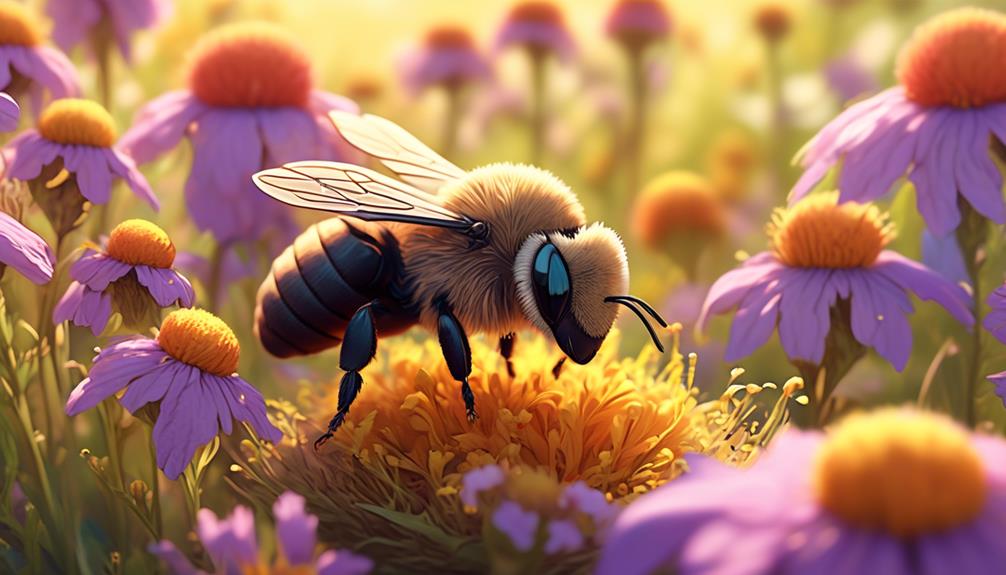
To truly appreciate the role of Mason Bees in Texas, you need to delve into their unique biological characteristics and behaviors. Unlike their honeybee counterparts, mason bees are solitary creatures. Each female is fertile and makes her own nest, usually in hollow reeds or holes in wood. They're also not aggressive. You don't have to fear being stung unless you handle them roughly or they're trapped under clothing.
Mason bees are also remarkable pollinators. They've a peculiar way of carrying pollen, wetting it with a little nectar and then storing it on their abdomen. This method causes a lot of pollen to rub off on flowers, boosting pollination rates. Additionally, they're active in cooler temperatures than most bees, allowing them to start pollinating earlier in the spring.
Furthermore, Mason bees have a shorter lifespan than honey bees. They live for just a few weeks, enough time to mate, lay eggs, and seal off their nests. It's fascinating to consider their efficiency and impact on ecosystems and agriculture within this short lifespan. Understanding these aspects helps you comprehend why cultivating Mason Bees in Texas is important.
Mason Bees: Texans or Foreigners?
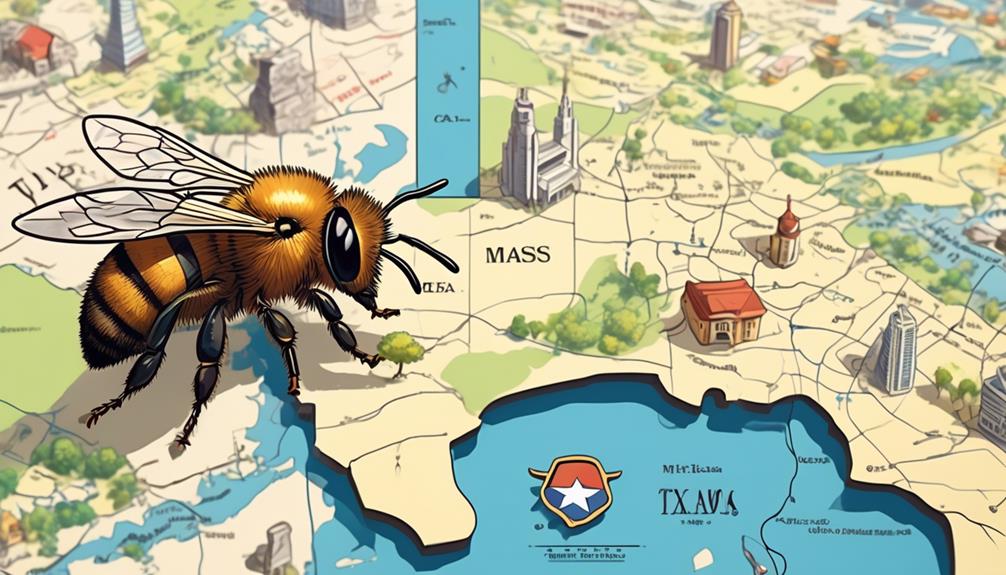
Now that you're familiar with the unique characteristics of Mason Bees, let's explore their origins and whether these prolific pollinators are native to Texas or immigrants from other regions. Despite their prevalence in the Texas landscape, Mason Bees are not originally from Texas. They're immigrants, having made their way into the state from other regions.
The journey of Mason Bees is fascinating. To provide a clearer picture, let's look at the following table that traces their route from origin to Texas.
Stage | Location | Description |
|---|---|---|
Initial | Native Regions | Mason Bees originate from temperate climates around the globe, with a concentration in North America, Asia, and Europe. |
Transit | Migration Path | They migrate through various states, adapting to different climates and environments. |
Final | Texas | Eventually, they've established a significant presence in Texas, adapting well to its climate. |
These bees have become an integral part of Texas' ecosystem, contributing significantly to its pollination process. Despite their foreign roots, they've truly become 'Texan,' reinforcing the idea that sometimes, immigrants can be as essential to a place as the natives. So, while Mason Bees didn't start in Texas, they've certainly found a home there.
The Role of Mason Bees in Texas
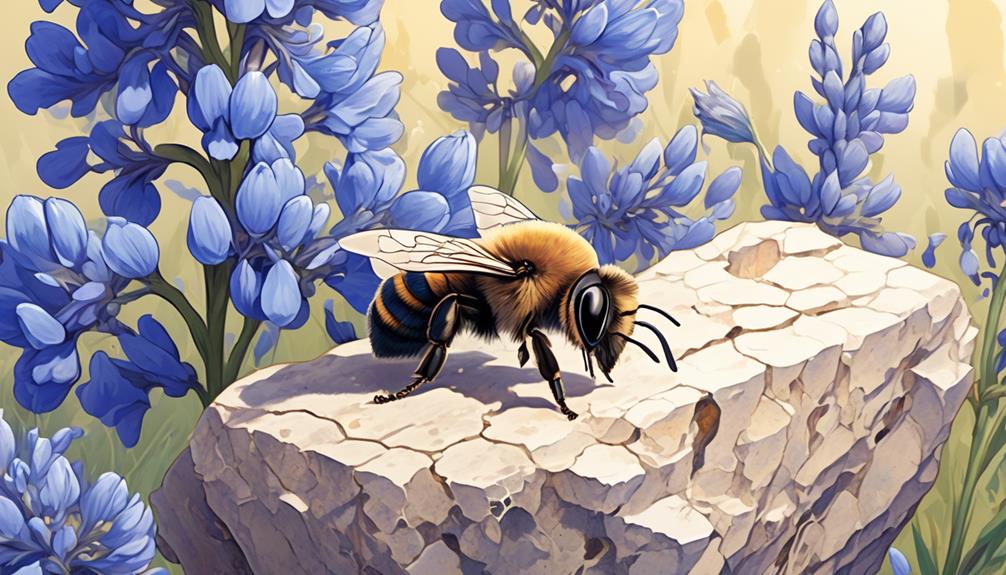
In the heart of Texas, Mason Bees play a significant role as prolific pollinators, enhancing the state's biodiversity and agricultural productivity. You'd find these small, hard-working insects buzzing from flower to flower, transferring pollen grains on their hairy bodies. They're particularly fond of fruit trees, making them crucial for your local apple or peach orchards.
Unlike honeybees, Mason Bees are solitary creatures. They don't build hives but nest in pre-existing holes, often filling them with clay or mud – hence their name. You'd find them in your garden, in dead trees or even in the small spaces of building structures.
But why should you care? Well, Mason Bees are super-efficient pollinators. While a honeybee might pollinate 5% of the flowers it visits, a Mason Bee can pollinate nearly 100%. That's a huge difference, especially when you're talking about large-scale agriculture. They're also non-aggressive and rarely sting, making them safe around kids and pets.
Attracting Mason Bees to Your Garden
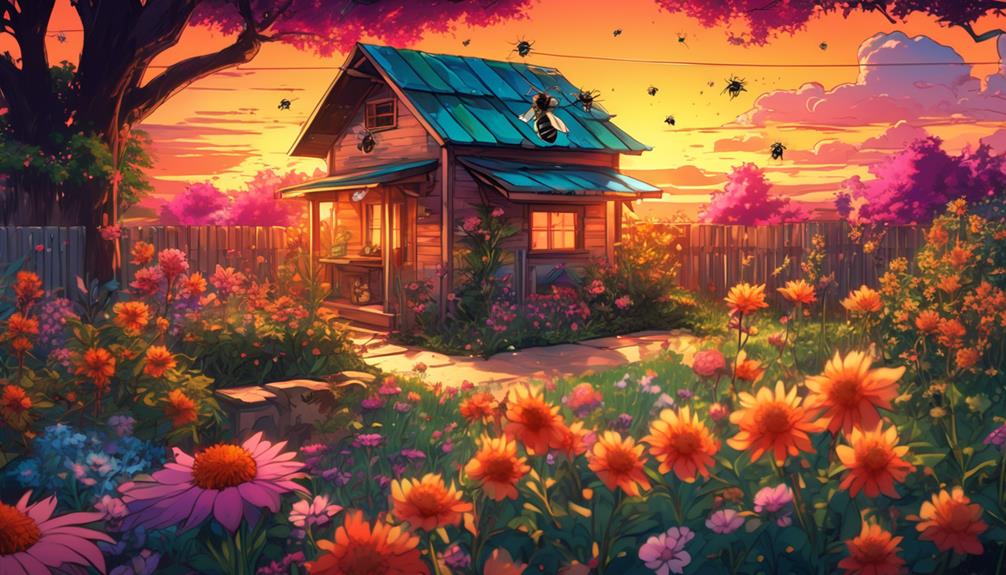
Given their immense contribution to pollination, you might be wondering how you can attract these industrious Mason Bees to your own garden. Well, it's not as complex as it may seem.
These bees are solitary creatures, so they don't require large hives like honeybees. Instead, they prefer small holes in wood or hollow stems to nest in. You can assist by setting up a bee house, filled with tubes or drilled holes.
Mason Bees are also attracted to a variety of native flowering plants. They're particularly fond of fruit trees, so if you're considering adding a few apple or cherry trees to your garden, you're likely to see a rise in your local Mason Bee population.
The Impact of Climate on Texas Mason Bees
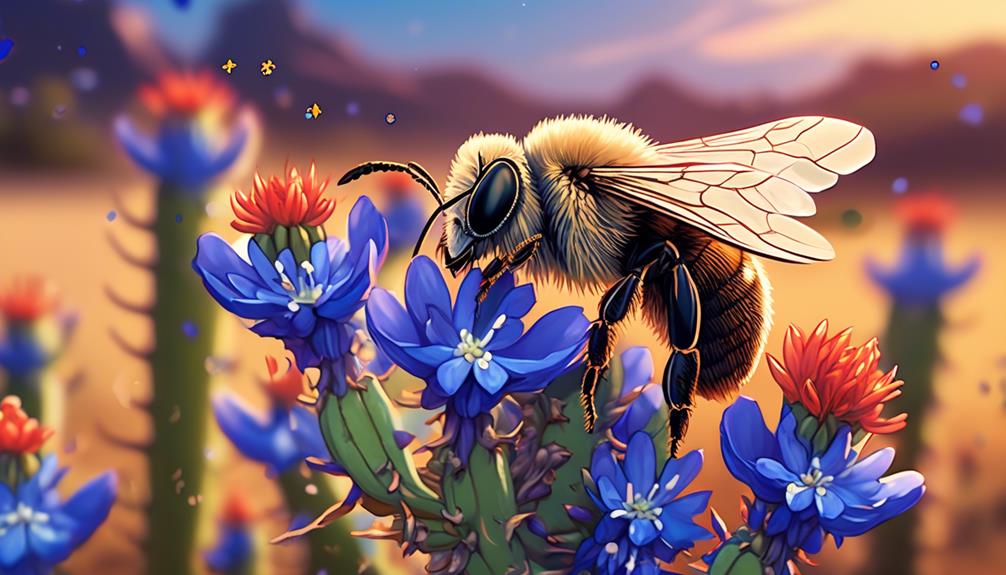
You mightn't realize it, but the Texas climate plays a significant role in the life cycle and habits of local Mason Bees. Known for their adaptability, these hardworking pollinators navigate the state's diverse weather patterns, but it's not always easy.
In the Lone Star State, you'll find a wide range of climates, from subtropical to semi-arid. Mason Bees, being ectothermic, rely on external sources to regulate their body temperature. That means the Texas heat can both help and hinder them. On one hand, warm weather allows for early emergence and longer foraging hours. On the other, extreme heat can lead to dehydration and shorter lifespans.
As for the cold, Texas winters can be harsh on these little critters. Mason Bees require a certain period of cold weather for their overwintering phase. However, when temperatures drop drastically or stay cold for too long, it can delay their emergence and interfere with their breeding cycle.
Climate change is also a concern. Rising temperatures and erratic weather patterns can disrupt the delicate balance these bees maintain with their environment. So, while they're resilient, the Texas climate can pose significant challenges for Mason Bees.
Conclusion
Indeed, you'll find mason bees in Texas, playing a vital role in pollination. Their presence enhances your garden's productivity, making them valuable allies.
However, climate changes can impact their population, so it's essential to create bee-friendly environments. By providing nesting sites and native plants, you can attract these busy little Texans to your yard.
So, let's give a warm welcome to these incredible bees and appreciate their contribution to Texas's unique ecosystem.

